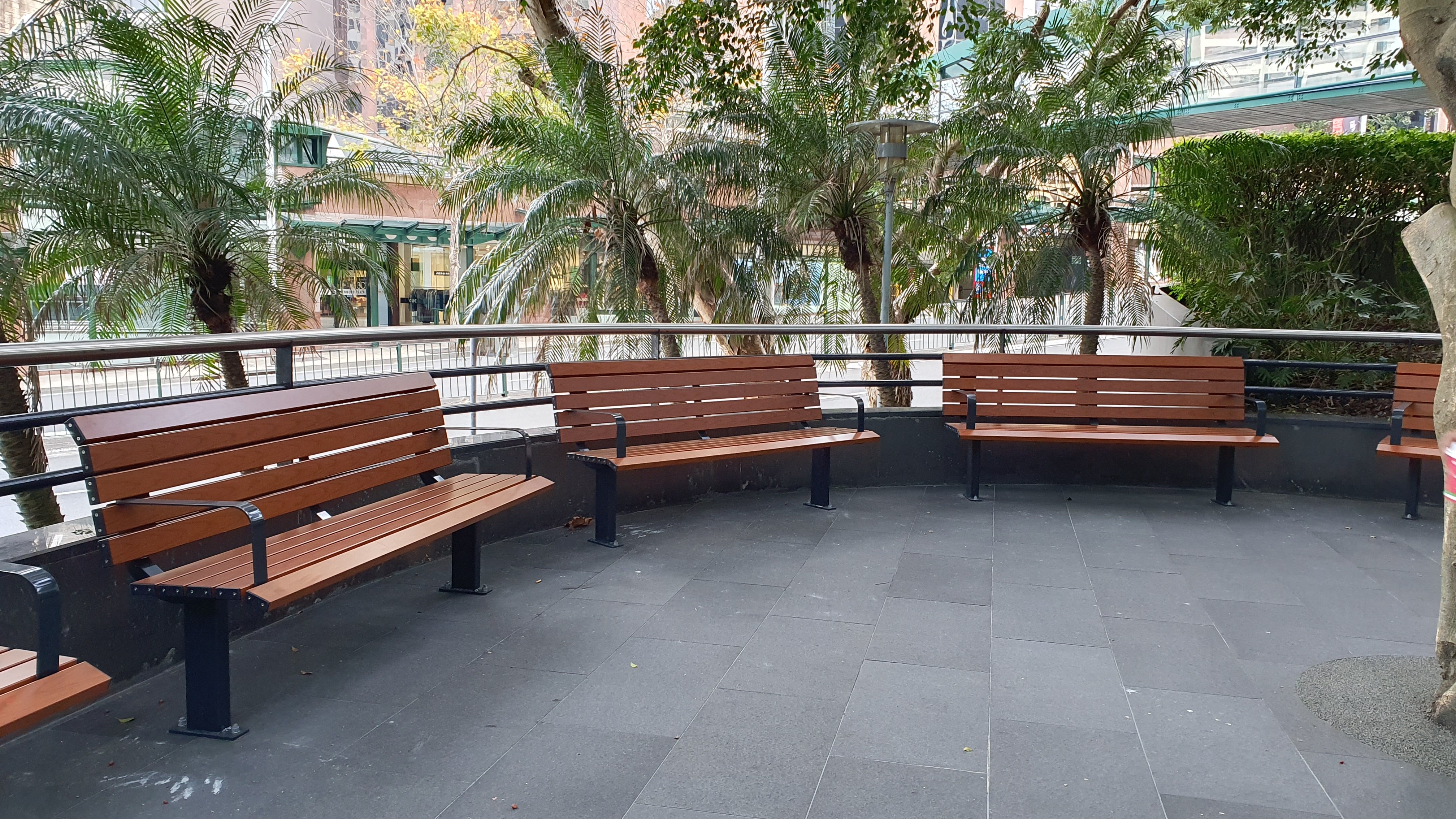The Impact Of Street Furniture: How Shelters And Benches Enhance Public Spaces




According to the United Nations, 55% of the world's population lives in urban areas, and this is expected to increase to 68% by 2050. These urban spaces include public spaces, such as bus shelters, parks, streets, and beaches.
Public space's apparent design impacts how we interact with our environment, space and each other. They are equipped with furniture like benches, litter bins, street lamps, and planters.
The availability of such street furniture makes these areas more welcoming and functional, benefiting everyone from children to the elderly. Enhancing public spaces with furniture like shelters and benches is crucial in making these areas more functional.
Let's explore how different types of street furniture can positively impact public spaces.
5 Ways Street Furniture Influences Public Spaces
1. More Inviting & Accessible
Public spaces are essential for fostering community interaction and enhancing urban life. The inclusion of street furniture contributes to their inviting nature.
Street furniture, which includes benches, tables, and bus shelters, plays a pivotal role in making these areas more accessible and comfortable for everyone.
Bus shelters not only protect commuters from the elements but also create a designated waiting area that encourages social interaction. This makes public transit more appealing, which can reduce the number of cars on the road, easing traffic congestion and lowering pollution.
In cities with well-designed shelter outdoor installations, people are more likely to use buses regularly.
These shelters often come equipped with seating, lighting, and route information, enhancing the user experience. Adding features such as seating, lighting, and clear signage makes spaces more pleasant and engaging.
Ultimately, well-designed street furniture fosters a sense of community and belonging, making urban areas more livable for residents and visitors alike.
2. Encourage Socialising
Benches dominate public areas, acting as social hubs where people can wait, sit, relax, and engage in conversation.
Placing benches strategically in parks, plazas, and along sidewalks encourages social interaction among community members. This is especially important in urban areas where social spaces are limited.
A well-placed bench can make passersby pause and take in their surroundings, fostering a sense of community.
In city parks, benches allow parents to watch their children play, friends to catch up, or individuals to simply rest and people-watch.
The role of benches in public areas extends beyond mere functionality; they help create a sense of place and belonging.
3. Ecologically Friendly
Street furniture can also contribute to environmental sustainability. Litter bins and recycling containers are essential in keeping public spaces clean and reducing litter.
By providing designated spots for waste disposal, these pieces of street furniture help manage trash and encourage recycling.
For instance, strategically placed litter and dustbins in public areas like parks and city centres make it convenient for people to dispose of their waste properly. This not only keeps the area clean but also promotes responsible behaviour among the public.
4. Promote Greenery
Planters are an excellent way to introduce greenery into urban environments, which can otherwise be dominated by concrete and asphalt.
Adding plants and flowers to public spaces through the use of planters improves the appeal and provides environmental benefits. Green spaces are known to reduce stress, improve air quality, and promote biodiversity.
Moreover, planters can be used to create natural barriers or define different areas within a public space, adding to the overall organisation and functionality.
5. Organised Spaces
Street furniture, referring to parking racks, plays a crucial role in organising public spaces.
By providing designated areas for bike parking, cities can encourage cycling as a sustainable mode of transportation while keeping public spaces tidy.
Organised spaces through the installation of bike racks not only make it easier for cyclists to secure their bikes. These racks also prevent bicycles from being left randomly, which can disrupt sidewalks and pathways.
This promotes a more orderly environment and supports the use of eco-friendly transportation.
Wrap Up
In conclusion, the social impact of street furniture can not be underestimated. It has a major role in shaping the character and functionality of public spaces.
Bus shelters that make public transit more appealing and benches that encourage social interaction contribute to the overall quality of urban life.
Cities can promote sustainability and greenery by incorporating eco-friendly options like recycling bins and planters. Investing in well-designed street furniture is a practical way to improve public spaces.
These small additions can make a big difference in creating inviting, accessible, and sustainable urban environments that benefit everyone.

 Aluminium Plank Furniture
Aluminium Plank Furniture Architectural Bollards
Architectural Bollards Benches
Benches  Bike Parking
Bike Parking Bin Enclosures
Bin Enclosures  Commercial Picnic Tables
Commercial Picnic Tables Concrete Plinth Mount Seating
Concrete Plinth Mount Seating Curved Benches
Curved Benches Drinking Fountains
Drinking Fountains Litter Bins
Litter Bins Outdoor Classrooms
Outdoor Classrooms Planter Boxes
Planter Boxes Seating
Seating Shelters
Shelters Skate Deterrents
Skate Deterrents  Tree Protection
Tree Protection AS Urban Suite
AS Urban Suite Athens Suite
Athens Suite Barcelona Suite
Barcelona Suite Berlin Suite
Berlin Suite Copenhagen Suite
Copenhagen Suite Dublin Suite
Dublin Suite Florence Suite
Florence Suite Glasgow Suite
Glasgow Suite Liverpool Suite
Liverpool Suite London Suite
London Suite Madrid Suite
Madrid Suite Manchester Suite
Manchester Suite  Milan Suite
Milan Suite Orbit Suite
Orbit Suite Outwood Suite
Outwood Suite Paris Suite
Paris Suite Prague Suite
Prague Suite  Portsmouth Suite
Portsmouth Suite Rome Suite
Rome Suite Spencer Suite
Spencer Suite Venice Suite
Venice Suite  Vienna Suite
Vienna Suite Woodville Suite
Woodville Suite School Furniture
School Furniture Healthcare Furniture
Healthcare Furniture Local Government Furniture
Local Government Furniture Park & Street Furniture
Park & Street Furniture Shopping Centre Furniture
Shopping Centre Furniture Aged Care Furniture
Aged Care Furniture